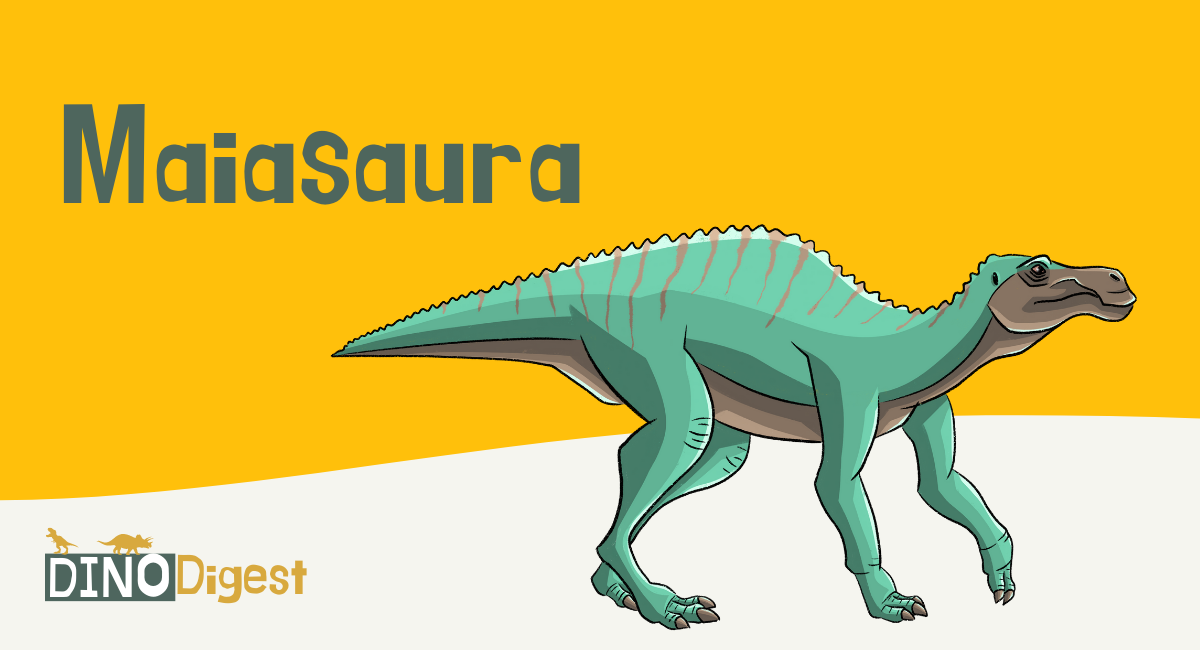The Maiasaura was found in Montana in the 1970s. The egg mountain and juvenile remains with eggshells that were too big to be hatchlings changed how paleontology saw dinosaurs. It was clear the adult Maiasaura were taking care of their young for their first year of life.
Table of Contents
Some Quick Facts about the Maiasaura

| Name | Maiasaura (meaning “Good Mother Lizard”) |
| Type of dinosaur | Ornithopod Hadrosaur |
| Territory | Inland wooded areas, North America |
| Size | As big as an African Bush Elephant |
| Color | Likely brownish |
| Interesting Characteristics | Flat beak, thick nose, and small, spiky crest for head-butting displays |
| Diet | Herbivore |
| Major Threats | Predators, climate change, natural disasters |
What did Maiasaura look like?
This dino had a flat beak, thick nose, and small, spiky crest for head-butting displays. It had hard skin and was the size of an African Bush Elephant. Maiasaura was 30 feet long, 8.5 feet tall, and heavy — about 8,000 pounds.
Because paleontologists from the Museum of the Rockies found and studied hundreds of fossils, we know much more about Maiasaura’s life than other Mesozoic animals. It’s amazing how much paleontologists Holly Woodward, Robert Makela, and Jack Horner have been able to teach us about this amazingly good mother lizard, Maiasaura.
What did Maiasaura eat?
Even though all Hadrosaurs were considered strict herbivores, recent examination of fossilized waste shows that Hadrosaurs also enjoyed eating crustaceans and the occasional insect.
Research shows that snacking on crustaceans was done during mating season. The rest of the year, Maiasaura’s diet included ferns, leaves, and other plant material, which they ground up using their 900 tiny teeth.
Juvenile Maiasaura would’ve eaten insects, and anything else the adult Maiasaura brought to the nesting site. It’s not known whether both parents cared for young Maiasaura dinos. Based on the fossils of both males and females being close to the nesting site, it’s likely that both mom and dad (or even multiple adults) fed the baby.
How did Maiasaura walk?
Maiasaura walked on both two legs and four legs! Examination of juvenile micro-fractures shows that juveniles preferred walking on two legs. The heavier, more developed adult Maiasaura would walk on four legs most often but could use a bipedal walk when needed.
There were a few reasons Maiasaura would want to walk on two legs. Prehistoric plants were much bigger than they are today, so Maiasaura would need to reach for taller plants. Maiasaura was also faster on two legs. If a predator got too close, Maiasaura could sprint on two legs much faster than on four legs.
Why Is the Maiasaura a Good Parent?
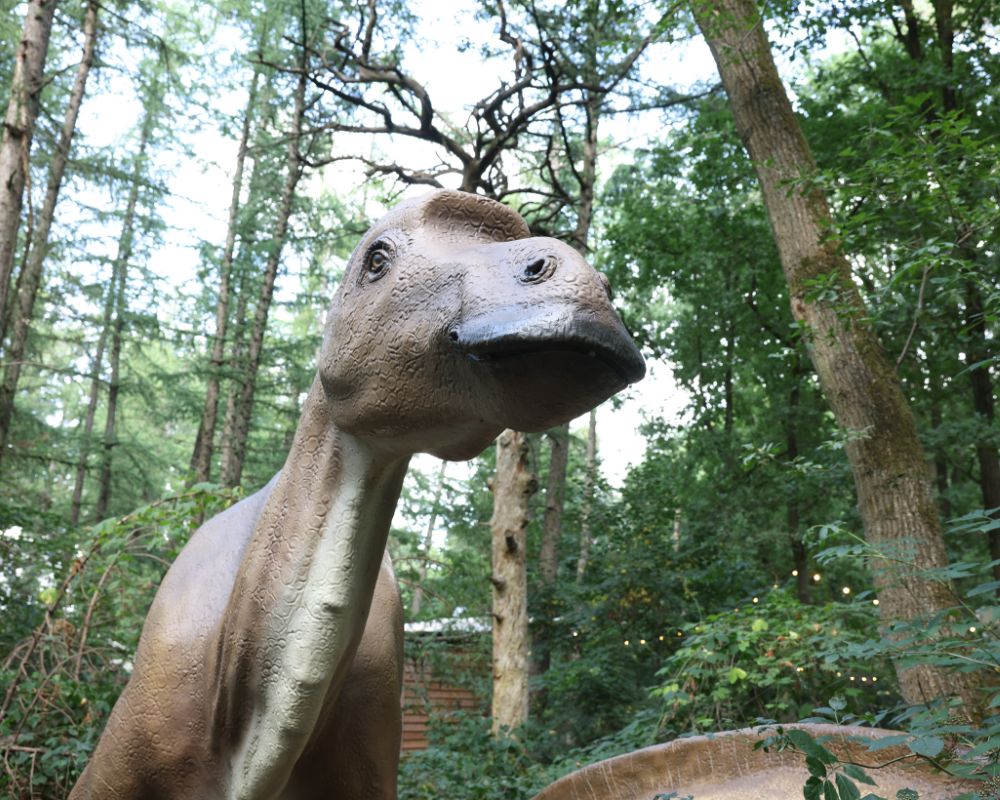
Evidence from the bone bed called Egg Mountain fossil remains show us that Maiasaura provided parental care to their young for at least the first year. Nesting sites contained remains of eggshells, hatchlings, embryos, and older juvenile Maiasaura.
Maiasaura eggs were tiny by dino standards-about, about the size of an Ostrich egg. Embryos and hatchling bones weren’t fully ossified, which meant that tiny baby Maiasaura wasn’t born with the ability to walk.
The care Maiasaura took in making the nest and the different ages of juvenile remains further suggest that Maiasaura was an attentive parent. Evidence gathered by paleontologists Jack Horner, Robert Makela, and Holly Woodward showed that juvenile Maiasaura stayed in the nest for their first year.
They would’ve needed parental care until then. The juvenile Maiasaura grew to about three feet in the first year when they finally left the nest and joined the herd.
What other dinos did the Maiasaura Live With?
Maiasaura lived with other Duck-billed Dinosaurs called Hadrosaurs, such as:
- The Prosaurolophus
- The Hypacrosaurus
- The Gryposaurus
- The Edmontosaurus
Herds of Maiasaura and other Hadrosaurs could reach numbers as high as 10,000!
Other herbivorous dinosaurs, like close relatives Brachylophosaurus and Ornithopod Orodromeus, also lived among Maiasaura. The Triceratops was a common sight near Maiasaura, Pachycephhlosaurus, and the harmless and tiny Theropod Bambiraptor.
What Ate the Maiasaura?
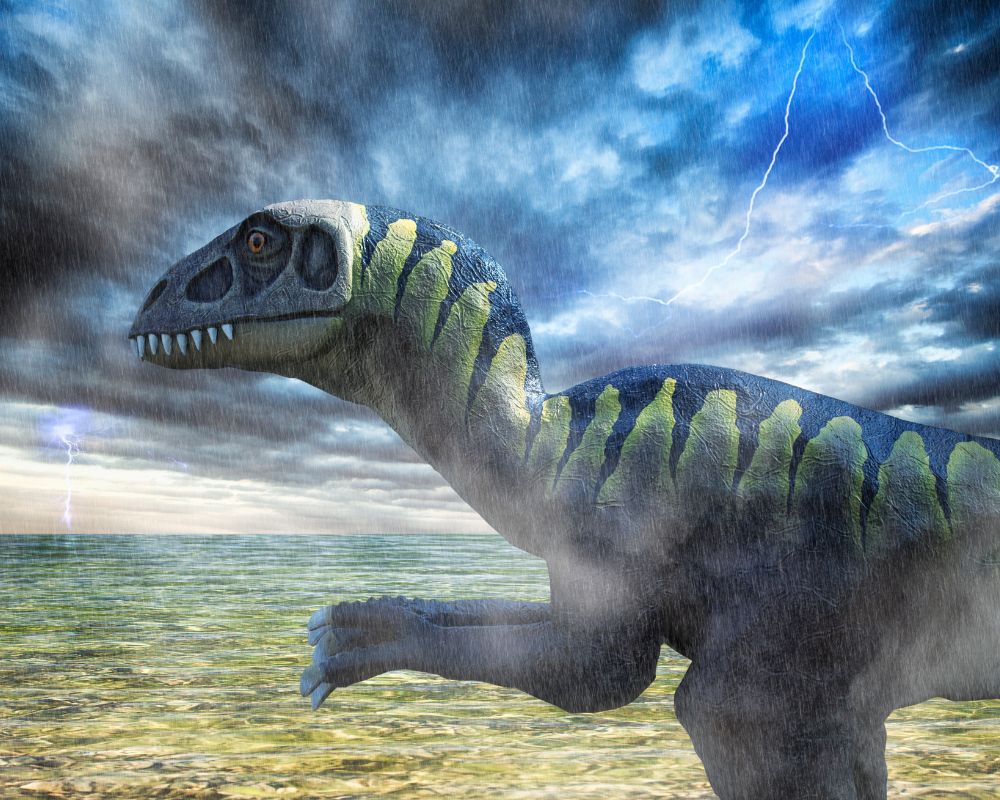
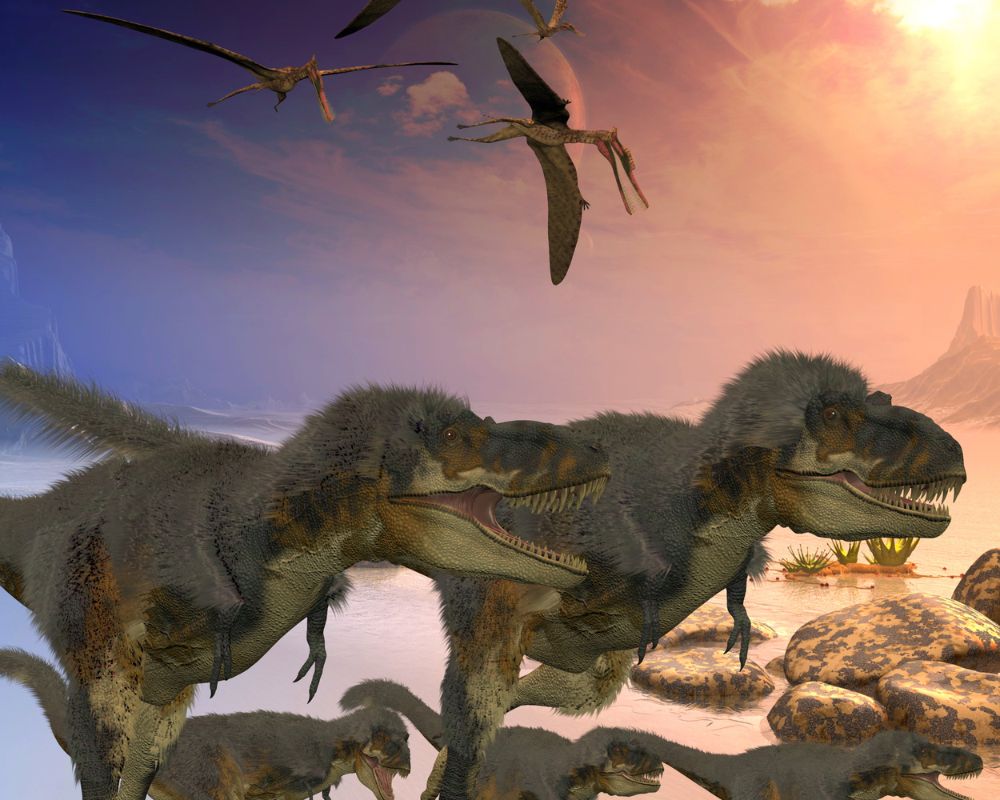
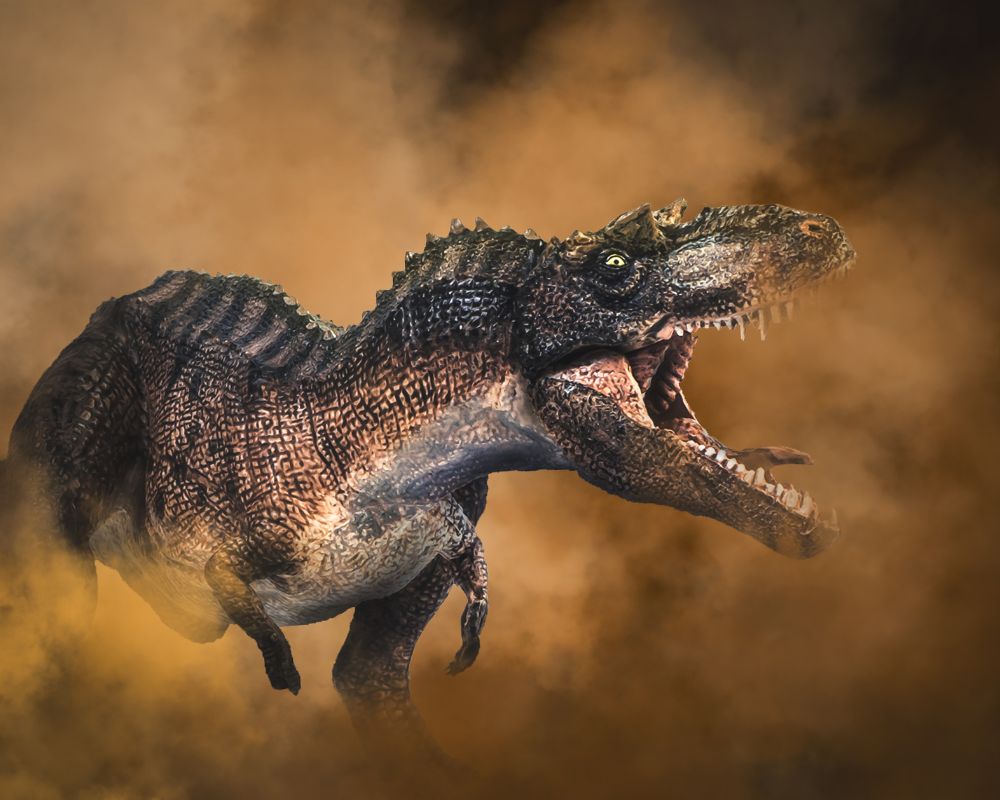
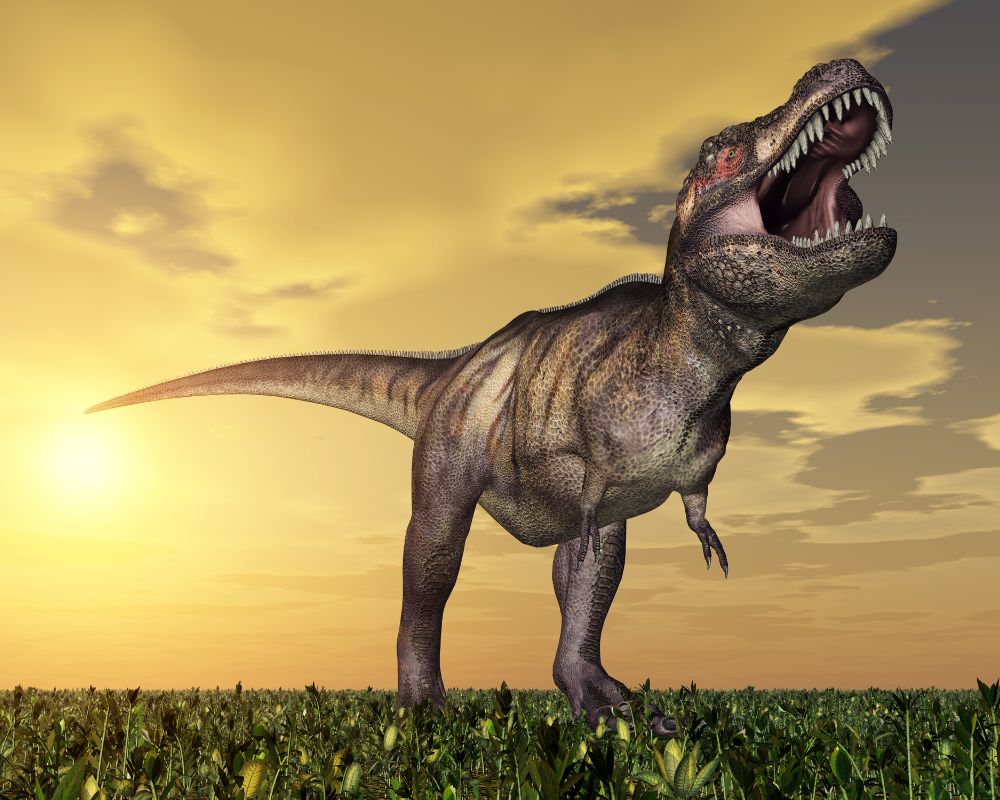
While the massive herds of up to 10,000 Maiasaura protected Maiasaura and their young from predators, they were still in danger of being eaten by large carnivorous dinosaurs. Troodon, Daspletosaurus, Albertosaurus, and Tyrannosaurus rex were all dangerous to any Maiasaura separated from the herd.
You might be surprised to see the smaller Troodon on the list of dangers faced by Maiasaura because they were only about 8 feet and weighed around 100 pounds. But Troodon was quick and smart, ambushing older and sick Maiasaura, who lagged behind the herd.
How did Maiasaura defend itself?
The Troodon would never attach an adult Maiasaura, especially one protecting their hatchlings. The thick tail of a healthy Maiasaura could take out a Troodon when needed!
Larger predators like Daspletosaurus, Albertosaurus, and Tyrannosaurus were more difficult for the Maiasaura to fight. But the Maiasaura had strong hind legs and could run around 25 mph when necessary. Their speed and living in large herds made Maiasaura a tricky meal for even the biggest predator.

